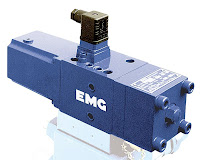(Drum Roll ...........................................)
Well, neither these philosophy are consider official nor not yet it can be implement into the Maintenance Area. Hydraulic system consists of wide area such as design, analysis, maintenance and many more. Hence the maintenance of hydraulic system is one of the most crucial part to ensure the systems are at optimum condition anytime anywhere.
Ok. BAck to the
There are three
What the heck is this SMT? Ok2...SMT are:
(drum Rolllllllllllllllllllllllll ...............)
Spare Parts
Manpower
Tools
Yeah! These 3 item is related each other and is effecting each other. However, let go deeper into this topic...
To me, the most important thing among these item are Spare Parts. Why? Because parts are the 'things' that ensuring our machine, system or whatever operate!
Example:
Imagine a lifting machine which is used to lift...... let say a box from lower level to higher place. As for the hydraulic system, normally the system will consists of hydraulic cylinder (for lifting purpose), hydraulic pump, hydraulic hoses and hydraulic control valves. These are the must-have-item in a hydraulic system to operate it.
Good maintenance practice must ensure all the parts at least have one unit to ensure any breakdown occur can be rectify in a minimum time. Let say, in worst case, the hydraulic pump did not have any spare and suddenly breakdown occur, WTF! The hydraulic system will be totally halt! The hydraulic pump is the heart of the hydraulic system! Without it fluid can't be distributed in the system....
How to seek for emergency remedy? Is there any ways to operate the system while waiting the new pump from the manufacturers/suppliers? Anything that can act like the hydraulic pump?
Heck! The answer is NO! That's why the Spare Parts is at the First Place!!
It's useless to have adequate manpower and tools without spare part(personal thought)
Number two, manpower. To execute maintenance activity, manpower is needed. Either while executing preventive, reactive or proactive maintenance (these maintenance topic will be discussed in next time), we still need the manpower. Adequate manpower will ensuring the task is carried out proper way and time.
Example:
Take above lifting machine as the sample. Same situation; the broken pump. This time the maintenance team has the spare parts and adequate, proper tools. But at the time situation take place there are only two technician in-charge out of three person in-charge during normal operation. The activity still can be carried out but it will consume a little bit more time (and increasing the machine downtime). However the situation is less worse than having no spare parts during breakdown!
But, adequate manpower is very important in maintenance activity in order to ensure the activity is smooth and tip-top!
The
Example:
Still the same lifting machine with the same broken pump. This time the maintenance team is having enough spare parts and manpower are all attending(luckily there are no member suddenly need to meet the doctor and take medical leave during the breakdown occur..LOL!). They need to replace the broken pump with the new pump. While doing the activity suddenly the wrench which is needed to open the M30 size MIA (missing in action..LOL!). How can they open the bolt? What they need to do?
No worries, with a little bit of creativity, experience, skills and determination the first aid kit can be made. One way is to fabricate wrench-look-alike-yet-functioning temporarily from other materials(let say mild steel plate). Once completed, the job can be finished (yet is still consuming more time). However, this scenario can be worst as having no spare parts if the activity need some sort of special equipment/tools.
By right, these three factors need to be closely monitored in order to achieve good maintenance practice. Sometime luck can be with us, and sometime they don't.
However, if you are feeling the luck is not with you, you can have the Lucky Strike Cigar...........(ok..that's a joke actually....ok...fine..it's not funny)
Till we meet again. Buh-bye!











